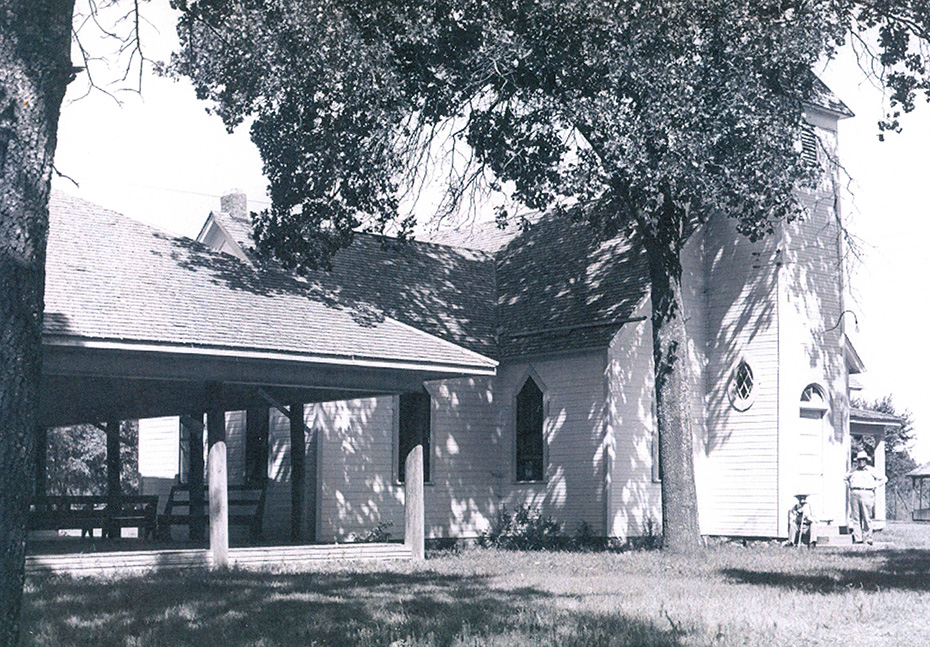Okmulgee Newtown Church has had a presence among the Mvskoke people for nearly 200 years. Its history is like a river, which began humbly, as a small spring, growing to be a mighty river of influence in the Muscogee (Creek) Nation, Indian Territory and the Oklahoma Indian Missionary Conference.
Samuel Checote answered God’s call to bring Christianity to his fellow Mvskoke brethren, at a time when his people were still recovering from the tragic Trail of Tears era. Checote began preaching the gospel to small gatherings of Creek people, despite the persecution that came with the introduction of new beliefs, similar to early disciples bringing the Good News. He was also one of the first ordained ministers from the Creek Nation, at a time when the Creeks had a prohibition against preaching and practicing Christianity. Checote received the penalty of up to 50 lashes with a whip for preaching the Good News and encouraging Christianity. Checote, along with his congregation at New Town, petitioned the Creek Council to lift the prohibition. Chief Roley McIntosh finally did so in the 1840s.
Starting on Checote’s homestead (west of present-day Okmulgee Lake) in the 1840s, the coming of allotment, Oklahoma statehood and the World War I, all served to bring Newtown to its current location, northwest of Okmulgee, Oklahoma. The church building was constructed in 1841 in what was then Indian Territory. Newtown has welcomed believers, chiefs, presidents and those hungry for comfort and salvation. It has baptized, taught, married, ordained, healed and laid to rest hundreds of God’s children, giving a Christian foundation to future conference, jurisdiction and national UMC leaders.
Points of interest at this Heritage Landmark: The church is located on seven acres. The church and classrooms are one building with the bell tower outside next to the church. South of the church is an open-air arbor. The Fellowship Hall combined kitchen is across from the arbor. The old camp houses are gone now, but the grounds are large, with oak trees, and area for parking. In back of the buildings and fellowship area is New Town Cemetery.
The site for the cemetery was donated by the Haynes family in 1930. The earliest gravesite dates from 1881. Six Methodist preachers are buried at the cemetery.
Special events: Annual Wild Onion dinner (TBA in the spring). There is a fellowship dinner after Sunday services and breakfast on the first Saturday of the month.
Area attractions: Creek Council House (Historic Landmark and Museum in Okmulgee), Wilderness Paradise Educational and Zoological Park, and Samuel Checote’s gravesite.
Chief Samuel Checote’s gravesite is located near downtown Okmulgee. Directions from the Creek Council House, downtown Okmulgee: go two blocks west of the Creek Council House to Okmulgee, go thirteen blocks North to Eufaula St., ten blocks west to Madison, and then 400 feet north to the gravesite. Total distance is 1.9 miles from the Creek Council House.
To visit: Contact Rev. Lisa Dellinger at 918-752-1042; dellinger.lisa@yahoo.com.
Location: T14N, R12E, SW 1/4 of Section 36, Northwest of Okmulgee, OK or 14460 N 210 Road, Okmulgee, OK 74447
Food and lodging: Best Western, Days Inn, Holiday Inn Express, Bel-Aire Motel; Café on the Square, Ike’s Downtown Pub & Eatery, Ms. Laura’s Cakes, fast food (visit www.okmulgeeonline.com for a complete list of eateries & hotels)
Directions: In northwest Okmulgee, turn left (west) as the intersection of Oklahoma and Eufaula Streets. Continue west 1.3 miles to N 210 Road. Turn right (north) on N 210 Road, continue north .3 miles to the church. Ample parking is available on the church grounds. Hand rails and a wheelchair ramp are available to enter the sanctuary.
For further information, contact: Christina Wolf, Archives, Dulaney-Browne Library, Oklahoma City University, 2501 N. Blackwelder Avenue; Oklahoma City, OK 73106.405-208-5919.
To learn more about United Methodist history in this area: Oklahoma Annual Conference and Oklahoma Indian Missionary Conference Archives are located at Oklahoma City University.

